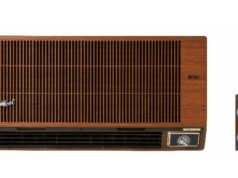A terminally-ill 14-year girl from the UK won a landmark legal case shortly before her death to be cryogenically preserved in the hope that she may be brought back to life at some point in the future.
During the case, the girl wrote to the judge, Peter Jackson, stating: “I have been asked to explain why I want this unusual thing done. I’m only 14 years old and I don’t want to die, but I know I am going to. I think being cryo-preserved gives me a chance to be cured and woken up, even in hudreds of years’ time.”
“I don’t want to be buried underground. I want to live and live longer and I think that in the future they might find a cure for my cancer and wake me up. I want to have this chance. This is my wish.”
After visiting her in hospital, Jackson said he was touched by “the valiant way in which she was facing her predicament.” He said the ruling wasn’t about the rights or wrongs of cryonics, which is still regarded with skepticism by the scientific community, but about a dispute between parents over the disposal of their daughter’s body. Regarding the girl’s death, Justice Peter Jackson said: “She died peacefully in the knowledge her body would be preserved in the way she wished.”
Soon after death, patients are put in an ice bath to cool the body before it is pumped full of an “organ preservation solution”. Once in the facility, the body is further cooled under computer control by nitrogen gas at a temperature of -110C over several hours. During the next two weeks, their temperature is lowered to -196C before being suspended in liquid nitrogen in a “patient care bay”, waiting for the day science can revive them.Since the technology was introduced in the 1960s, only three organisations – two in the US and one in Russia – have made it a commercial business, the court heard.
As there are no cryonic facilities in the UK, the girl’s body was transported to the US where commercial company Alcor has frozen it “in perpetuity” for a cost of almost $46,000. The judge noted that the girl’s family is not well off, but her mother’s parents had raised the money.
The schoolgirl died on October 17. She arrived at the Cryonics Institute in Michigan eight days later, becoming the 143rd patient. Among the others are its founder Robert Ettinger – an academic known as the “father of cryonics”. As of 2014, about 250 bodies were cryopreserved in the United States, and 1500 people had made arrangements for cryopreservation after their legal death.







